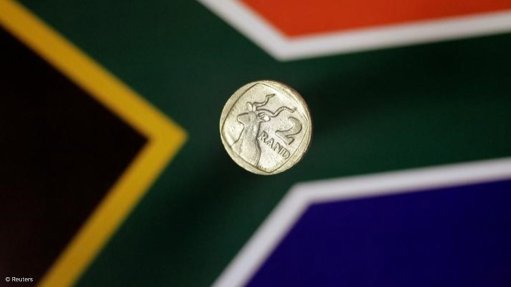Eskom in 1987 . . .
In the last two articles, I wrote about how I went to work for Eskom in the Eastern Cape as the chief electrical engineer: operations. This was a fabulous job. Not only was I paid twice the going rate for a professional engineer, but I had access to large amounts of money. The whole of the Eastern Cape Eskom regularly gathered in groups supposed to reinforce our ‘Mission, Strategy and Philosophy’, but which was known to all as our ‘Meetings, Seminars and Parties’.
Whereas previously working for Eskom had been a boring routine of quotidian, mundane tasks, we could now set our own versions of how to improve the power systems. In the group were the electrical engineering faction that ran the system to achieve the best engineering results. They were opposed by the financial department, whose idea was to save money wherever they could and achieve a desirable financial result. Neither of them believed that anybody else could exist. Engineers and accountants – these were the people that counted.
Into the mixture of staff swam a group of self-appointed, unqualified people who were employed in power sales, marketing and public relations. They believed it was from their group that the new masters should achieve greatness.
I wasn’t worried about politics; the fact was that the Eastern Cape, particularly that part comprising East London and as far north as the Transkei boundary and south to Port Elizabeth, was supplied by a single power line of 220 kV. The power line supplied north and south feeders at the main intake substation at Pembroke. The Pembroke system was also supplied at 11 kV, 66 kV and 132 kV. However, these three power systems were not enough to supply the whole of the Pembroke load; thus, we adopted a highly strategic approach to the 220 kV Pembroke intake. We strategically hoped it would never fail.
I have the sort of personality that can deal with a high-stress environment, and it was put to the test during the times that we turned the Pembroke line off for maintenance. This was done over the weekend, and we sincerely hoped it would be put back in service before Monday.
It was possible that National Control would give us a slap on the wrist if we were to keep the 220 kV out of circuit for longer than the weekend. We could always run the power supply from the East London power station, “long since gone to heaven”. To have a regular power outage, as we have these days, was unthinkable. Nobody in their right mind at Eskom conceived of such a possibility.
Thus, it occurred that the weekend came and on the Friday night the Pembroke 220 kV power line was disconnected, and East London and surrounding districts operated on the remaining power lines and the power station running at full capacity. All went well until Sunday morning, when we were due to restore the 220 kV line to the grid. It was early morning and the GM, Ken Garman, and I stood outside, watching the sun rise. We stood outside, looking at the view, when there was a loud click. Then the whole 220 kV incoming circuit breaker blew up. Garman was impressed. I was riveted.
I ran into the control room, where the six control staff were looking at the shape of the power line SCADAR system with wonderment. They looked at me as if I was responsible. The problem was that the East London power station would run out of power in about 12 hours, after which the greater part of East London and the surrounding districts would be without power.
We could always energise the portion of the 220 kV that had not blown up, but this would risk it blowing up as well. The system operator and I sat on the ground and debated what to do next. The system operator came up with a clever plan, and if it worked, we would be heroes; if it failed … We implemented his plan. Our plan worked!
Article Enquiry
Email Article
Save Article
Feedback
To advertise email advertising@creamermedia.co.za or click here
Comments
Press Office
Announcements
What's On
Subscribe to improve your user experience...
Option 1 (equivalent of R125 a month):
Receive a weekly copy of Creamer Media's Engineering News & Mining Weekly magazine
(print copy for those in South Africa and e-magazine for those outside of South Africa)
Receive daily email newsletters
Access to full search results
Access archive of magazine back copies
Access to Projects in Progress
Access to ONE Research Report of your choice in PDF format
Option 2 (equivalent of R375 a month):
All benefits from Option 1
PLUS
Access to Creamer Media's Research Channel Africa for ALL Research Reports, in PDF format, on various industrial and mining sectors
including Electricity; Water; Energy Transition; Hydrogen; Roads, Rail and Ports; Coal; Gold; Platinum; Battery Metals; etc.
Already a subscriber?
Forgotten your password?
Receive weekly copy of Creamer Media's Engineering News & Mining Weekly magazine (print copy for those in South Africa and e-magazine for those outside of South Africa)
➕
Recieve daily email newsletters
➕
Access to full search results
➕
Access archive of magazine back copies
➕
Access to Projects in Progress
➕
Access to ONE Research Report of your choice in PDF format
RESEARCH CHANNEL AFRICA
R4500 (equivalent of R375 a month)
SUBSCRIBEAll benefits from Option 1
➕
Access to Creamer Media's Research Channel Africa for ALL Research Reports on various industrial and mining sectors, in PDF format, including on:
Electricity
➕
Water
➕
Energy Transition
➕
Hydrogen
➕
Roads, Rail and Ports
➕
Coal
➕
Gold
➕
Platinum
➕
Battery Metals
➕
etc.
Receive all benefits from Option 1 or Option 2 delivered to numerous people at your company
➕
Multiple User names and Passwords for simultaneous log-ins
➕
Intranet integration access to all in your organisation
















